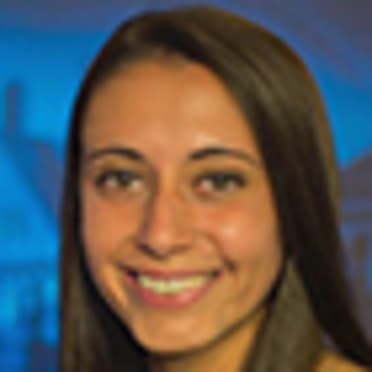CLEVELAND -- The wait is over. No longer do Indians fans have to wonder if or when their beloved shortstop Francisco Lindor will be traded. Because the probability of a Lindor trade increased exponentially over the years, fans had plenty of time to prepare for the goodbye. But after more of a shock with Carlos Carrasco also being included in the deal, it’s leaving many to wonder: Now what?
Are the Indians officially in rebuilding mode? Will there be more moves to come? What happens now? Thursday’s trade that shipped Lindor and Carrasco to the Mets in exchange for infielders Amed Rosario and Andrés Giménez and two of the Mets’ Top 10 prospects has opened the door for a lot of questions. Let’s try to put together some answers:
What will the starting rotation look like in 2021?
In a time of so much uncertainty, one guarantee is that Shane Bieber -- the reigning American League Cy Young Award winner -- will be back to lead the Tribe’s rotation next season. Behind him, the club will have Zach Plesac and Aaron Civale. Even without Carrasco in the starting group, the Indians still have a solid top half of a rotation.
The fourth and fifth spots will be up for grabs. The leading candidate to earn the fourth spot in the rotation will be Triston McKenzie, who made his debut in 2020 and owned a 3.24 ERA in eight games (six starts) with 42 strikeouts and nine walks in 33 1/3 innings. He’s been in the Tribe’s top three prospects (according to MLB Pipeline) over the past few years and the club has a lot of optimism in his future if he can stay healthy.
That leaves left-handers Scott Moss and Logan Allen to compete with Adam Plutko, Cal Quantrill and Trevor Stephan for the final opening. Quantrill worked in relief for the majority of the 2020 season but has expressed a desire to get back into his regular starting role. Allen pitched in just three games for the Tribe last year (all in relief) and owned a 3.38 ERA, while Plutko pitched to a 4.88 ERA in 10 games (four starts) last season.
Moss has yet to make his big league debut, but he owned a collective 2.96 ERA in 26 starts between the Indians’ and Reds’ systems in 2019. Cleveland picked up Stephan last month in the Rule 5 Draft from the Yankees. In 2019, Stephan owned a 4.73 ERA in 20 games (19 starts) between New York’s Class A Advanced and Double-A teams.
Who will play shortstop?
With Lindor in the Big Apple, it seems most likely that either Rosario or Giménez will take over at short. Both are primarily shortstops, but both also have the ability to move around the infield. Whoever doesn’t get the starting job at short will likely move over to second.
Cleveland’s internal options include Yu Chang, Ernie Clement, Gabriel Arias and (eventually) Tyler Freeman.
Have they officially begun rebuilding?
The Indians have attempted to avoid entering a rebuild for the past few years. After the 2018 season, it was the club’s goal to trim down its payroll significantly after it realized it was on an unsustainable path. But the trimming has since turned into slashing, as the Indians are now projected to open the 2021 season with a payroll around $35 million (assuming they wouldn’t make any other additions). Cleveland hasn’t had an Opening Day payroll that low since 2004 ($34.9 million).
Connecting those dots, it seems clear that the team has entered some form of rebuilding phase. Because it still has an elite rotation (despite it not being quite as deep now), it will still be able to contend, but there’s still no hiding that the club will have one of the lowest payrolls in the Majors next year.
“We have been very transparent even prior to pandemic about actively managing our roster and our finances,” Indians president of baseball operations Chris Antonetti said. “We did not want to go through an extended rebuild period so we have made trades along the way that balanced both the present and the future. This is another example of that, in which we're getting back players we think will help us now and moving forward.”
Could there be another trade?
If you looked at the Indians’ roster earlier this week, the two highest-paid players for the 2021 season were Lindor (expected to make north of $20 million in arbitration) and Carrasco (owed $12 million). That leaves just three players who are owed guaranteed money for next season and three who are arbitration eligible. With José Ramírez now leading their payroll at $9.4 million for next season and third-base prospect Nolan Jones ready to make his MLB debut, is there any concern that Ramírez could be moved next? From Antonetti's remarks on Thursday afternoon, it doesn't appear so.
“I expect that we will be reinvesting the money back into the team,” Antonetti said. “Again, at the same time, we'll always assess opportunities. [But] no, my expectation is we're going to be building from where we are right now.”
What will they do with the financial flexibility they’ve created?
Antonetti said that the goal is to reinvest this money back into the team for next season. But what exactly that means is unknown. The Indians have solved their middle infield issues and they have Jake Bauers, Bobby Bradley and Josh Naylor to choose from at first base.
If the team would be using this financial flexibility to try to build on the 2021 roster, it could look for outfielders on the free-agent market. Or maybe the Tribe tries to save some of this money to find a way to extend Bieber’s contract. But it also wouldn’t be overwhelmingly surprising if the Indians enter Spring Training with their current roster, along with possibly a few veterans they can sign to Minor League deals.




